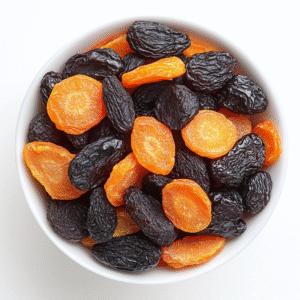Prune Mui Recipe is a popular, savory snack that originates from various regions in Asia, often enjoyed for its distinct tangy and sweet flavor profile. This dish combines the rich taste of dried prunes with a flavorful seasoning blend, creating a unique treat that is both satisfying and healthy. The prune mui recipe has been passed down through generations and is enjoyed as a snack or appetizer. Known for its distinct combination of sweet, salty, and slightly sour tastes, it has become a favorite among those who love bold and adventurous flavors.
The traditional prune mui recipe typically involves marinating dried prunes in a mixture of spices, herbs, and sometimes a touch of sugar or vinegar, allowing the flavors to meld together. The result is a chewy, flavorful fruit snack that has a perfect balance between sweetness and tang. While the ingredients may vary from region to region, the essence of the recipe remains the same—transforming simple prunes into a complex, mouthwatering treat. Over the years, many variations of the recipe have emerged, with each cook adding their personal twist to make the prune mui uniquely their own.
If you’re looking to try something new in your culinary repertoire, the prune mui recipe is a great option to explore. It’s not only an easy snack to prepare but also an excellent conversation starter at gatherings. Whether served as an appetizer or paired with other dishes, prune mui Recipe offers a distinct flavor experience that will leave your taste buds wanting more. So, if you’re ready to dive into the world of Asian-inspired snacks, give this prune mui recipe a try and enjoy the delightful combination of flavors.

- Ingredients for Making Prune Mui
- Step-by-Step Guide to Preparing Prune Mui Recipe
- Health Benefits of Prune Mui Recipe
- How to Store Prune Mui Recipe
- Prune Mui Recipe Variations and Customizations
- Cultural Significance of Prune Mui
- Prune Mui as a Natural Sweetener
- Prune Mui Recipe and Its Global Popularity
- Prune Mui Pairing Suggestions
- The Science Behind the Taste of Prune Mui
- How to Adjust the Salt and Sweetness in Prune Mui
- Common Mistakes to Avoid When Making Prune Mui
- The Role of Prune Mui in Traditional Chinese Medicine (TCM)
- The Science Behind Dried Plums: Why Prune Mui is Good for You
- Vegan-Friendly Snack: Prune Mui as a Plant-Based Option
- Prune Mui for Weight Management
- Prune Mui in International Cuisine
- Prune Mui as an Ingredient in Sauces and Marinades
- The Art of Drying Plums for Prune Mui
- Exploring the Sweet and Sour Flavors of Prune Mui
- Prune Mui as a Stress Reliever
- Tips for Perfecting Your Prune Mui Recipe
- Conclusion: Embrace the Flavor of Prune Mui
- Prune Mui Recipe From DishBloom!
- FAQs: Prune Mui Recipe
- Share Your Twist!
Ingredients for Making Prune Mui
The key ingredients for making Prune Mui Recipe include:
- Dried plums (prunes)
- Salt
- Sugar (white or brown)
- Chinese five-spice powder
- Licorice root (optional for additional flavor)
- Plum powder (or prunella) for an authentic taste
Step-by-Step Guide to Preparing Prune Mui Recipe
a) Soak the Dried Plums
Begin by soaking the dried plums in warm water to rehydrate them. This step helps to soften the fruit and makes it more receptive to absorbing the flavoring ingredients.
b) Prepare the Spice Mixture
In a separate bowl, combine salt, sugar, five-spice powder, and any additional spices you may prefer. You can adjust the amount of sugar or salt based on your taste preference.
c) Marinate the Plums
Once the plums are rehydrated, mix them with the prepared spice mixture. Ensure that each plum is coated evenly with the spices and let them sit for a few hours to absorb the flavors.
d) Drying the Plums
To achieve the signature chewy texture, the plums must be dried. You can either air dry them for several days or use a dehydrator for quicker results. The drying process is crucial for achieving the right consistency.
Health Benefits of Prune Mui Recipe
Prune Mui is not just a flavorful snack but also offers several health benefits:
- Digestive Health: The high fiber content of dried plums helps in promoting healthy digestion and regular bowel movements.
- Rich in Antioxidants: Dried plums are rich in antioxidants that help fight free radicals in the body and promote overall well-being.
- Hydration: Although dried, the plums retain moisture, making them a hydrating snack option.
- Bone Health: Dried plums are known to help maintain bone density and prevent bone loss, particularly in women.
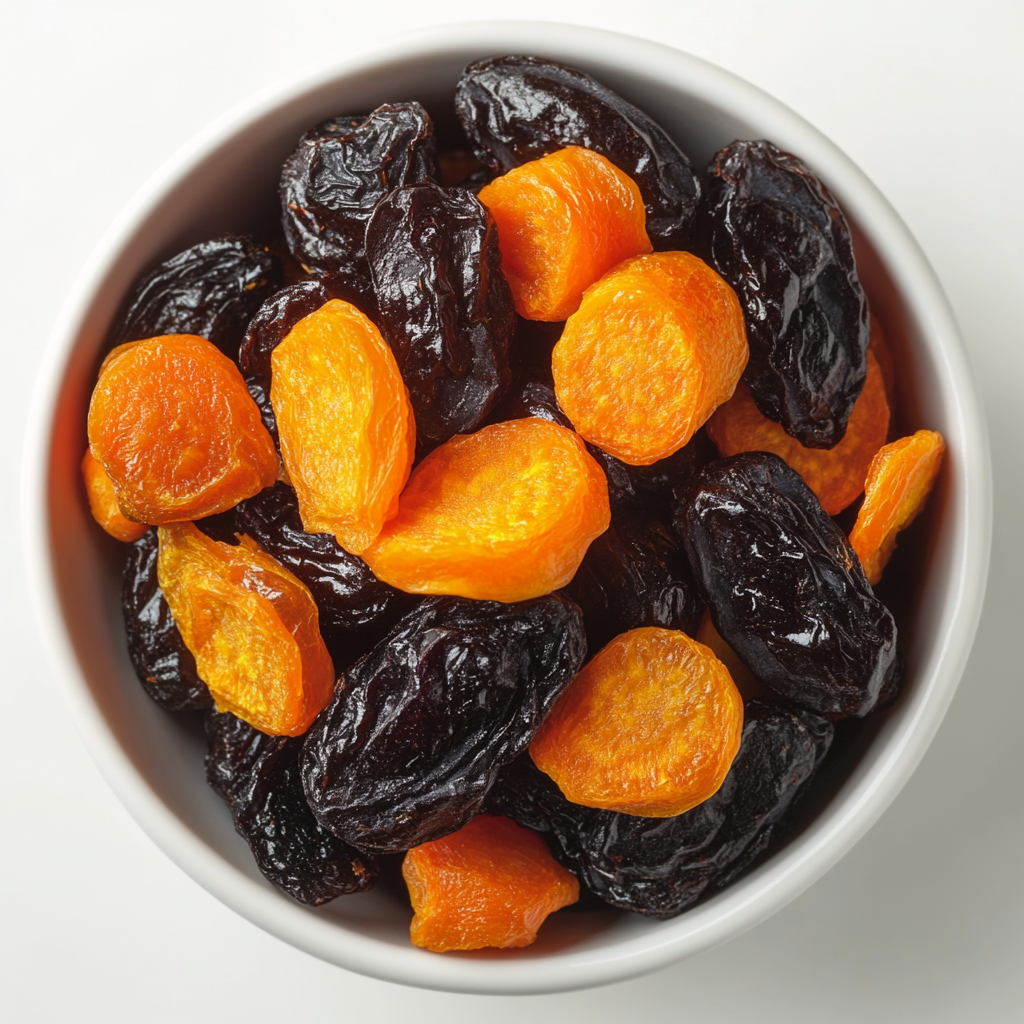
How to Store Prune Mui Recipe
To ensure that your Prune Mui stays fresh and flavorful, store it in an airtight container. Keeping it in a cool, dry place will preserve its taste and texture for several weeks. If you want to keep it longer, refrigeration can be an option.
Prune Mui Recipe Variations and Customizations
While the traditional Prune Mui recipe is delicious on its own, you can experiment with different flavors. Some variations include:
- Adding Chili for Heat: If you enjoy a spicy kick, add some chili powder or chili flakes to your spice mix.
- Honey or Maple Syrup for Extra Sweetness: For a touch of sweetness, you can substitute sugar with honey or maple syrup.
- Herbs and Spices: Feel free to experiment with other spices like cinnamon or star anise for a more complex flavor profile.
Cultural Significance of Prune Mui
Prune Mui Recipe holds a special place in Chinese culture and is often enjoyed during traditional festivals or as part of daily snacking routines. In some regions, it is considered a symbol of good health and longevity. It is also commonly served during tea time, paired with Chinese tea, and often shared during gatherings as a token of hospitality.
Prune Mui is not just a snack but a part of the food culture that celebrates balance and harmony of flavors. Its origin and preparation methods have been passed down through generations, making it a beloved classic in many households.
Prune Mui Recipe as a Gift
In Chinese culture, giving food as a gift is a gesture of kindness and respect. Prune Mui, with its rich flavors and health benefits, is a thoughtful and unique gift option. Its attractive appearance and long shelf life make it an excellent gift for family, friends, or business associates, especially during festivals like Chinese New Year, Mid-Autumn Festival, or other celebrations.
To present it as a gift, package the Prune Mui in decorative boxes or jars, and it can be enjoyed not only as a tasty snack but as a reminder of tradition and good health.
Prune Mui Recipe in Modern Cuisine
While Prune Mui Recipe is rooted in traditional Chinese culinary practices, it has found a place in modern cooking as well. Today, many chefs and food enthusiasts experiment with incorporating Prune Mui into various dishes:
- Salads: Add chopped Prune Mui Recipe to fresh salads for an unexpected burst of flavor and texture.
- Desserts: Its sweet-salty profile pairs wonderfully with chocolate, ice cream, or other creamy desserts, creating a fusion of tastes.
- Smoothies: Blend Prune Mui into smoothies for a unique twist and added health benefits.
- Meat Dishes: The tangy and salty flavors of Prune Mui can complement savory dishes like roasted meats or stir-fries.
Prune Mui as a Natural Sweetener
Beyond its use as a snack, Prune Mui can also serve as a natural sweetener in various recipes. Due to its sweetness from the sugar and natural sugars in the plums, it can be used in place of refined sugars in cooking or baking. This makes it a healthier alternative for those looking to reduce their sugar intake while still enjoying a touch of sweetness.
Prune Mui Recipe and Its Global Popularity
While traditionally a Chinese snack, Prune Mui has gained recognition around the world, especially in Asian communities and food markets outside of China. As more people discover its unique taste and health benefits, Prune Mui is being embraced by a global audience. It’s now available in many international grocery stores, particularly in Asian supermarkets, and is becoming a popular choice for adventurous eaters looking to explore new flavors and textures.
Prune Mui Pairing Suggestions
Prune Mui pairs well with various beverages and other snacks:
- Tea: Its tangy flavor is perfectly complemented by traditional Chinese teas like oolong, jasmine, or pu-erh.
- Nuts and Seeds: Prune Mui pairs beautifully with salted or roasted nuts, such as almonds, walnuts, or pumpkin seeds.
- Cheese: For a surprising twist, serve Prune Mui alongside soft cheeses like brie or goat cheese, balancing the sweetness with the creaminess of the cheese.
This versatility makes Prune Mui a great option for mixing and matching with other snacks and drinks for a balanced flavor experience.
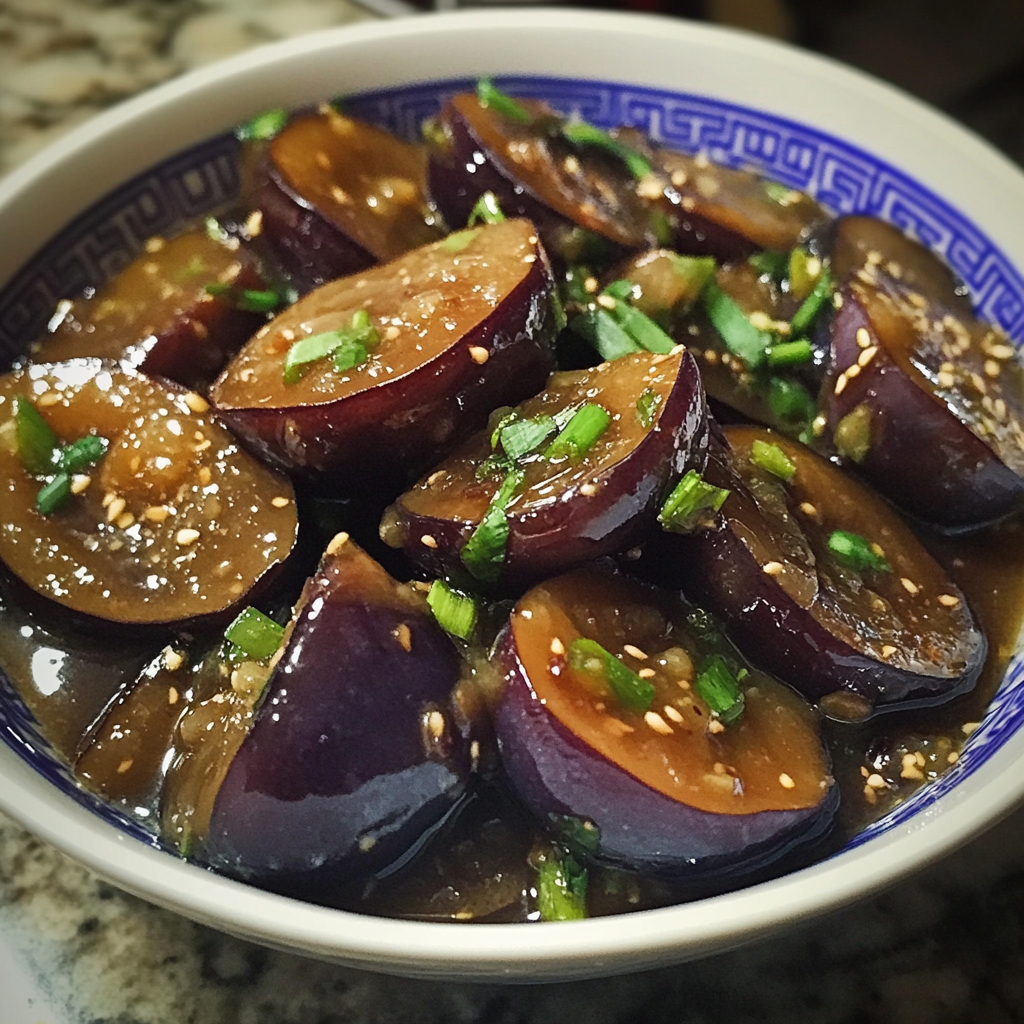
The Science Behind the Taste of Prune Mui
The distinctive taste of Prune Mui comes from the combination of naturally sweet plums, the salty marinade, and the infusion of spices. The drying process intensifies the flavor of the plums, making them chewy and more concentrated in taste. The fermentation process, if done traditionally, can also introduce an additional umami flavor, which is characteristic of many preserved foods in Asian cuisine.
Understanding the science behind Prune Mui’s flavor profile helps to appreciate how such a simple snack can offer such complexity, making it a favorite for those who appreciate multifaceted flavors in their food.
How to Adjust the Salt and Sweetness in Prune Mui
Adjusting the salt and sweetness in Prune Mui is key to tailoring it to personal preferences. If you prefer a sweeter Prune Mui, you can increase the amount of sugar in the recipe. Alternatively, for those who enjoy a more savory version, you can add a pinch of extra salt or even a touch of soy sauce or fish sauce to give it an added depth of flavor.
By experimenting with the salt-to-sugar ratio and spice blend, you can create a batch of Prune Mui that aligns perfectly with your taste.
Common Mistakes to Avoid When Making Prune Mui
Making Prune Mui is relatively simple, but there are a few common mistakes to avoid to ensure the best results:
- Not drying the plums thoroughly: If the plums aren’t dried properly, they may remain too moist, affecting the texture and flavor.
- Over-marinating: Leaving the plums in the spice mix for too long can make them overly salty or overly sweet.
- Using too much spice: While spices add great flavor, using them in excess can overpower the natural taste of the plums. Balance is key.
- Not using ripe plums: Choosing the right plums for drying is essential. Overripe or underripe plums can result in undesirable textures and flavors.
The Role of Prune Mui in Traditional Chinese Medicine (TCM)
In Traditional Chinese Medicine (TCM), Prune Mui is often regarded as a food with medicinal properties. It is believed to have cooling properties and can help balance the body’s internal energy. The plums, along with the spices used to prepare Prune Mui, are thought to assist in detoxifying the body, improving digestion, and alleviating constipation. In some TCM practices, dried plums are used to treat ailments such as heatstroke and are also known for their ability to boost the immune system.
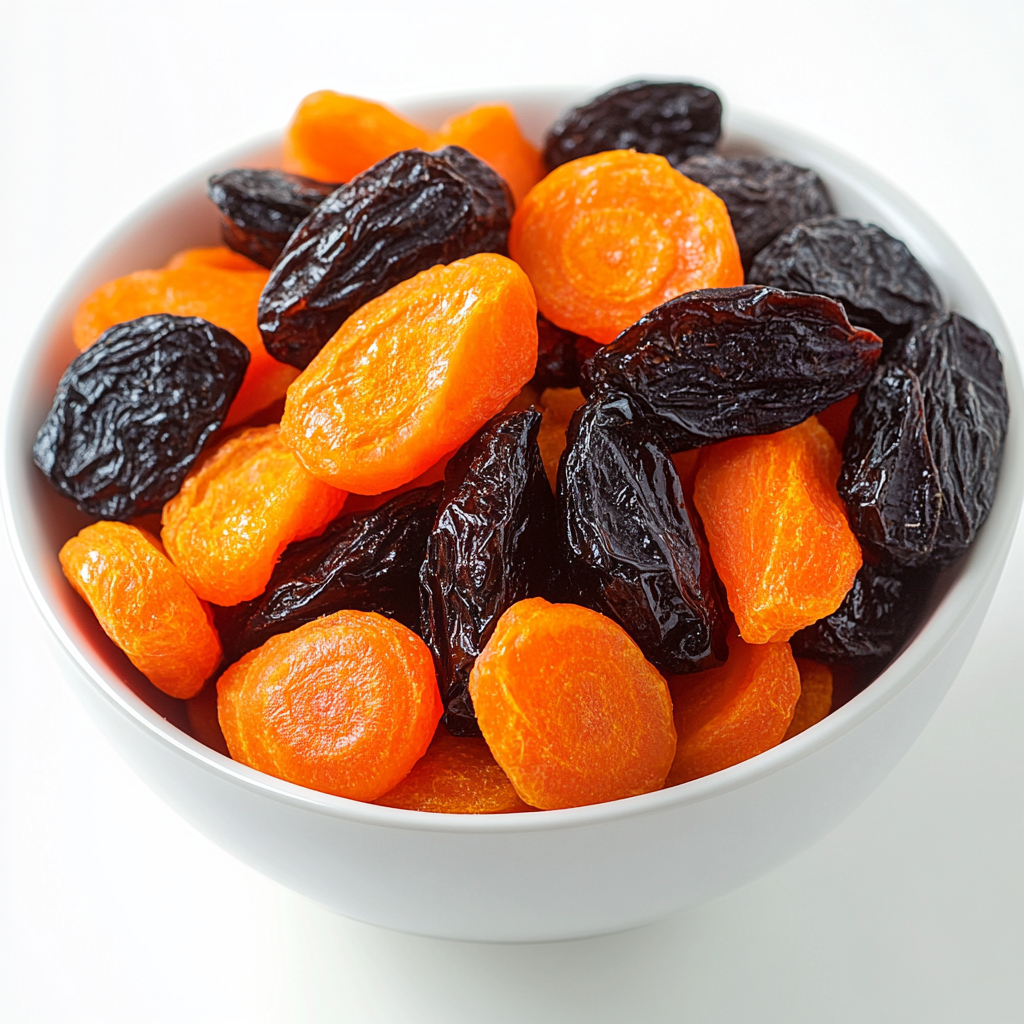

The Science Behind Dried Plums: Why Prune Mui is Good for You
Prune Mui’s health benefits can be attributed to the nutritional profile of dried plums:
- High in Fiber: Dried plums are rich in fiber, which promotes gut health by supporting digestion and regulating bowel movements.
- Rich in Potassium: Dried plums contain a high amount of potassium, which is vital for heart health and muscle function.
- Packed with Antioxidants: The antioxidants present in dried plums help to combat oxidative stress, protect cells, and reduce inflammation in the body.
- Bone Health: Studies have shown that dried plums can support bone health and may help prevent osteoporosis, making them an excellent snack for older adults.
This combination of nutrients and benefits makes Prune Mui not only a flavorful snack but also a smart choice for those looking to improve their overall health.
Vegan-Friendly Snack: Prune Mui as a Plant-Based Option
For those following a vegan or plant-based diet, Prune Mui is an ideal snack. Since it is made from dried plums and natural spices without any animal-derived ingredients, it fits perfectly into a plant-based lifestyle. It’s also a great option for people looking for healthy, natural alternatives to processed snacks, as Prune Mui contains no artificial additives or preservatives.
Prune Mui for Weight Management
For individuals looking to manage their weight, Prune Mui can be a helpful snack. The high fiber content in dried plums helps with satiety, making you feel fuller for longer, reducing the likelihood of overeating. Additionally, the natural sweetness of Prune Mui can satisfy sugar cravings without the need for high-calorie, processed sweet treats. Consuming small amounts can help curb hunger between meals, making it a smart choice for those seeking a healthy, low-calorie snack.
Prune Mui in International Cuisine
Although Prune Mui is a traditional Chinese treat, it is also being explored in international cuisines. Chefs across the world are incorporating this flavorful preserved fruit into their menus, blending Asian flavors with Western culinary techniques. For example:
- Fusion with Western Dishes: It can be paired with roasted meats or used in savory pies and quiches, giving these dishes a unique twist.
- Asian Fusion Desserts: Prune Mui can be integrated into desserts like tarts, puddings, or even ice creams, where its distinct taste adds a surprising yet delightful flavor profile.
The growing interest in fusion cuisine has allowed Prune Mui to find new contexts and uses, making it a global snack sensation.
Prune Mui as an Ingredient in Sauces and Marinades
Prune Mui’s tangy-sweet profile makes it a valuable ingredient in sauces and marinades. When blended with other ingredients such as soy sauce, vinegar, and spices, it can create a unique sauce perfect for glazing meats, fish, or vegetables. This gives the dish an extra layer of flavor and complexity, while still maintaining the essence of Prune Mui’s signature taste.
For a simple marinade:
- Combine Prune Mui with soy sauce, ginger, garlic, and a little bit of honey or brown sugar.
- Marinate chicken, pork, or tofu in this mixture to infuse the dish with an unforgettable flavor.
The Art of Drying Plums for Prune Mui
The drying process is key to creating the perfect Prune Mui. While traditional methods involve air-drying or sun-drying the plums, there are modern alternatives such as using a food dehydrator or an oven. The drying process intensifies the flavors, turning the plums into chewy, concentrated morsels.
If you prefer air-drying, place the plums on a clean, dry surface in a well-ventilated area. However, this method can take several days to complete, depending on the humidity. Alternatively, using a dehydrator can speed up the process while preserving the flavor and nutritional content.
Exploring the Sweet and Sour Flavors of Prune Mui
One of the most interesting aspects of Prune Mui is its balance of sweet, sour, and salty flavors. The dried plums contribute a rich, natural sweetness, while the saltiness from the brine and the sourness from the spices combine to create a delightful burst of taste with every bite. This flavor complexity is why Prune Mui is so beloved in Chinese cuisine, where the balance of flavors plays an important role in every dish.
For those who prefer more sweetness, adjusting the sugar content can help bring out more of the fruit’s natural sugars. Alternatively, those who enjoy the sour or salty flavors can tweak the amount of salt or spices used during marination.
Prune Mui as a Stress Reliever
Due to its nutrient content, Prune Mui has been linked with improved mood and stress relief. The magnesium content in dried plums helps regulate the body’s stress response, while the fiber and natural sugars provide a calming effect. When consumed in moderation, Prune Mui can help stabilize blood sugar levels, which in turn can prevent mood swings and promote a more relaxed state of mind.
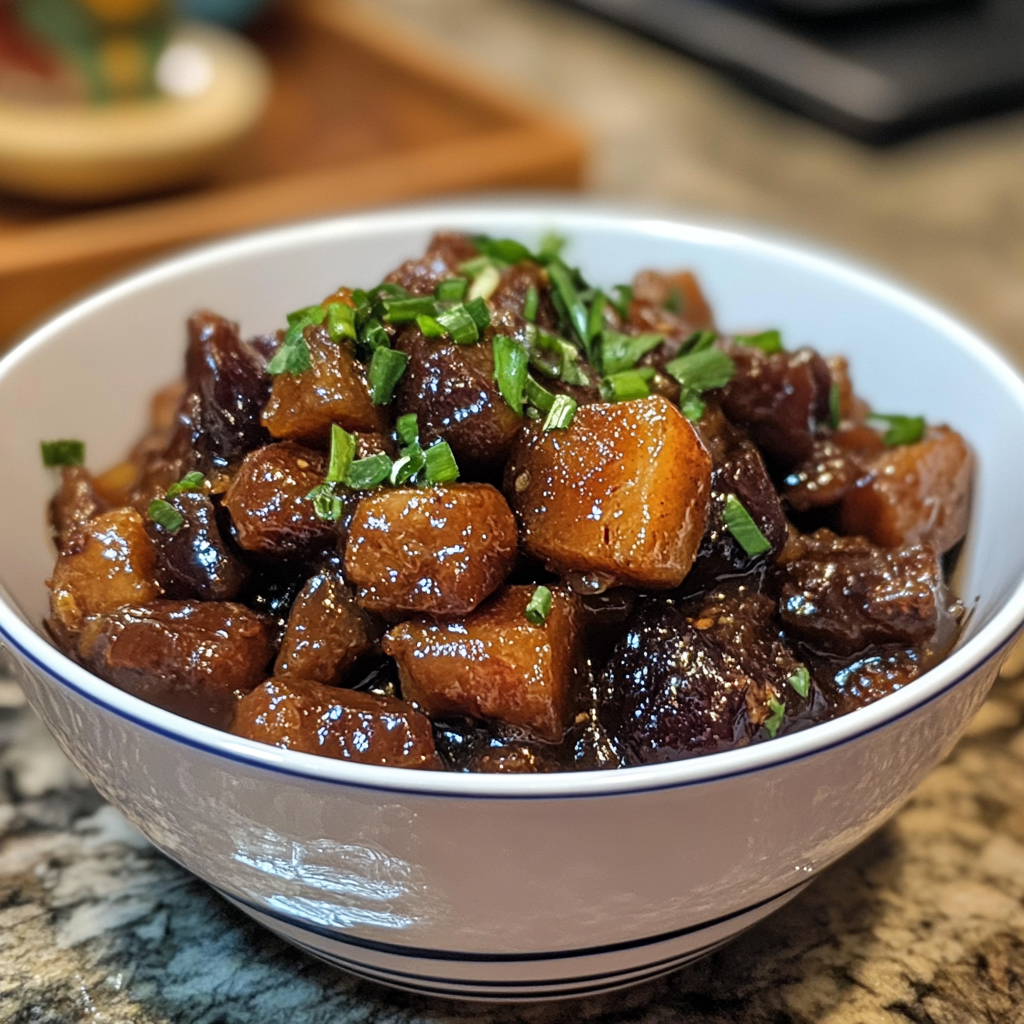
Tips for Perfecting Your Prune Mui Recipe
- Use Fresh, Ripe Plums: Select plums that are firm but slightly ripe for the best texture. Overripe plums may become mushy and lose their shape when dried.
- Don’t Overdry: While the plums need to be dried thoroughly, don’t leave them in the dehydrator or drying process for too long, or they may become overly tough and lose their sweetness.
- Experiment with Flavorings: While the traditional Prune Mui recipe is delicious, feel free to explore variations by adding herbs like mint or basil for a fresh twist.
- Adjust the Salt and Sugar Balance: Customize the recipe to suit your taste preferences. If you prefer a sweeter treat, increase the sugar, and if you like it more savory, you can add a pinch more salt or other umami ingredients.
Prune Mui: A Snack with History
Prune Mui is more than just a snack; it’s a symbol of the long history of Chinese preservation techniques and culinary wisdom. The use of drying, salting, and spicing fruits like plums is a centuries-old tradition that has stood the test of time. With its roots deeply embedded in Chinese culinary history, Prune Mui serves as a reminder of the rich cultural practices that continue to shape modern cuisine.
As you prepare Prune Mui at home, you’re connecting with a time-honored tradition, embracing a flavorful, healthy snack with centuries of history behind it.
Conclusion: Embrace the Flavor of Prune Mui
Prune Mui is not just a snack; it’s an experience that brings together diverse flavors, textures, and health benefits. Whether you’re seeking a new snack to enjoy, a versatile ingredient for your kitchen, or a way to honor Chinese culinary traditions, Prune Mui offers endless possibilities. With its balance of sweetness, saltiness, and tanginess, it’s a snack that appeals to all types of palates. Explore this unique treat today and discover how Prune Mui can elevate your snacking experience!
Prune Mui Recipe From DishBloom!

Prune Mui (Chinese Preserved Plums)
Equipment
- Large mixing bowl
- Airtight container or jar
- Dehydrator or food dryer (optional)
- Clean kitchen towel or drying rack (for air drying)
Ingredients
- 10-12 dried plums prunes
- 2 tablespoons salt
- 2 tablespoons sugar white or brown
- 1 teaspoon Chinese five-spice powder
- 1-2 teaspoons licorice root powder optional
- 1 tablespoon plum powder or prunella (optional)
- Water for soaking the plums
Instructions
- Rehydrate the Plums: Soak the dried plums in warm water for about 1-2 hours to soften them. Drain the water and gently pat the plums dry with a kitchen towel.
- Prepare the Spice Mixture: In a mixing bowl, combine the salt, sugar, Chinese five-spice powder, licorice root powder, and plum powder (if using). Stir well to make sure the spices are evenly mixed.
- Marinate the Plums: Add the rehydrated plums to the spice mixture and toss them gently to coat each plum evenly. Let the plums marinate in the spice mixture for about 2-3 hours or longer for a stronger flavor.
- Dry the Plums: Option 1: Air Drying – Lay the marinated plums out on a clean drying rack or kitchen towel in a well-ventilated area for several days, flipping them occasionally until fully dried.
- Option 2: Dehydrator/Oven – Place the plums on a dehydrator tray or baking sheet and dry them in a dehydrator at a low temperature (around 135°F/57°C) for 6-8 hours or in the oven at the lowest possible temperature for about 4-6 hours.
- Cool and Store: Once the plums are fully dried and chewy, allow them to cool completely. Store them in an airtight container or jar in a cool, dry place.

Notes
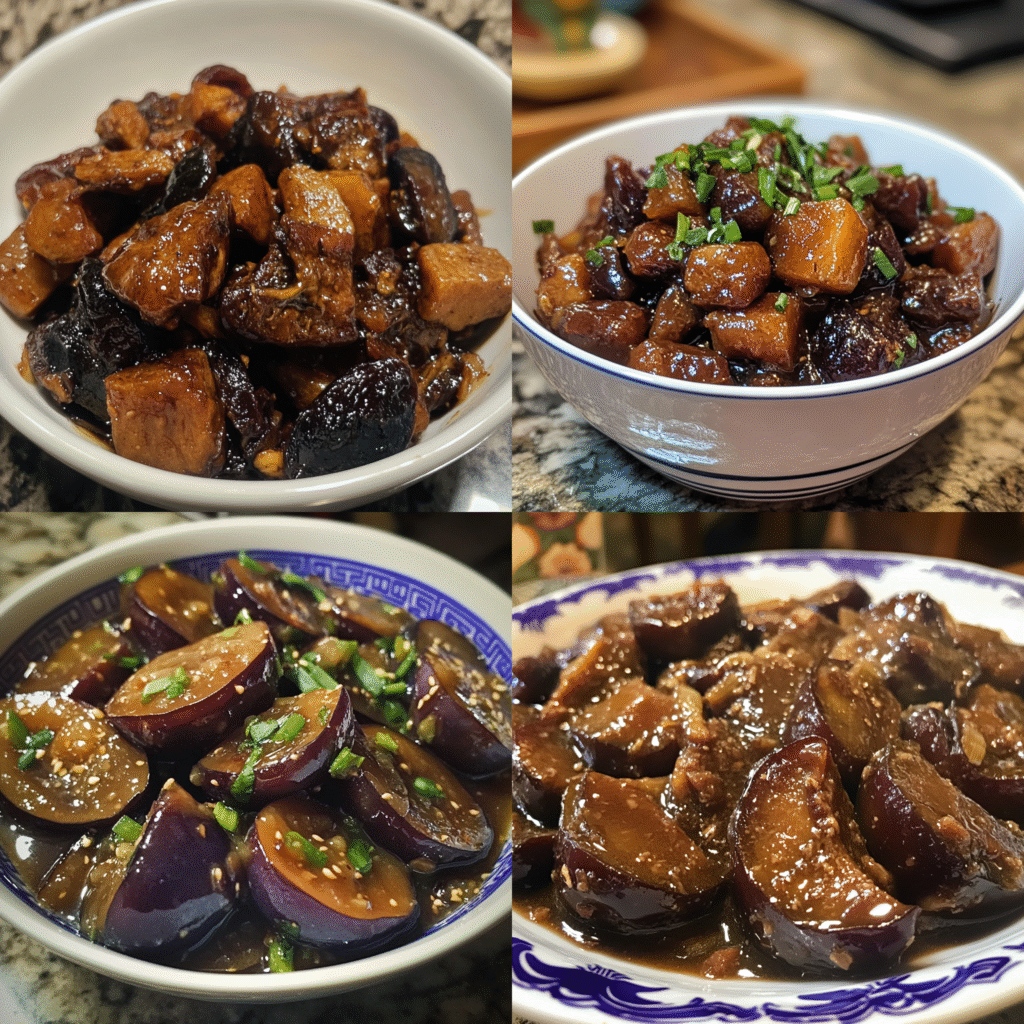
FAQs: Prune Mui Recipe
Frequently Asked Questions
What is the best way to learn HTML?
The best way to learn HTML is by starting with the basics, practicing regularly, and using online resources such as tutorials and documentation.
How can I add images in HTML?
You can add images in HTML using the <img> tag. For example: <img src="image.jpg" alt="description">.
What is JSON-LD and how does it work?
JSON-LD is a way to structure data in JSON format to be machine-readable, which helps search engines understand the content better.
Share Your Twist!
Have your own spin on the Prune Mui Recipe? We’d love to hear it! Whether you’ve added a touch of chili for heat, swapped in maple syrup for a unique sweetness, or experimented with new spices like star anise share your version with us in the comments below!
📸 Tag us on Instagram using #PruneMuiTwist and show off your flavorful creation. We might just feature your twist in our next post!
Remember, creativity is the heart of every recipe, so don’t hesitate to make it your own. What’s your secret ingredient?
References :
12 Vacation-Inspired Cocktails and Mocktails to Keep the Travel Blues Away

